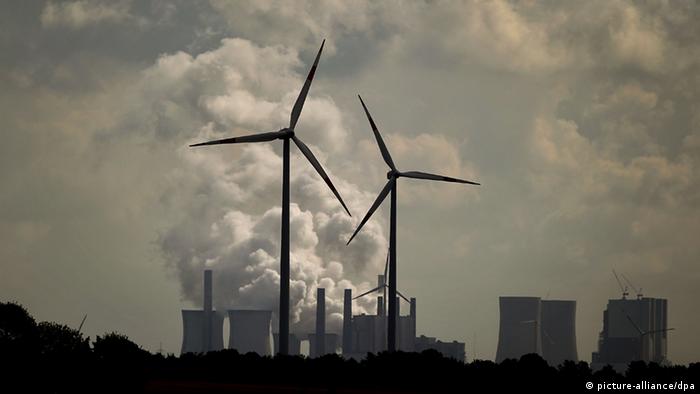On February
25, the White House convened a conference on environmental stewardship and climate
change with leaders of religious communities from around the U.S. There was a
noticeable absence of panelists representing some groups, such as the Native
Americans, the Jews and the Buddhists. There were references to God's Earth and
Creation as unifying concepts throughout the event although such concepts are
not universally accepted by all religions. Still, the event was highly
significant in the consensus it conveyed: The climate is simultaneously an
environmental, social justice and moral issue that requires urgent action. The
White House is to be commended for convening this timely gathering to mobilize
support from faith leaders to address the deepening climate crisis.
The event
highlighted President Obama's Climate Action Plan
which focuses on cutting carbon pollution in the U.S., preparing the country
for impacts of climate change and leading international efforts to combat
global climate change. The statistic that in 2012 U.S. carbon emissions fell to
the lowest level in two decades, "even as the economy continued to
grow," was reiterated as a sign of progress in the right direction. There
was an exhortation to embrace a bottom-up approach to climate protection
throughout the event. Faith based leaders were encouraged to motivate their
congregations to participate in the ENERGY STAR
Program of the government which seeks to reduce energy costs and related
greenhouse gas emission by 20 percent by 2020.
Although the
White House event on February 25 could not provide room for deeper
investigation of issues underlying climate change and environmental
stewardship, broader views and discussion are essential. Can climate change be
addressed from the bottom-up without top down change in the political-economic
system? Moral stewardship of the environment cannot be limited to the
faith-based actors. What are the moral obligations of big business, the
dominant actor in the contemporary world?
Sustainable
development cannot be achieved without changes in the prevailing patterns of
economic growth. Shouldn't corporations using technologies and energy that harm
the environment and human well-being be required to include ethical, social and
environmental criteria in their decision-making? Shouldn't the financial sector
that was bailed out at the tax payers' expense be challenged to invest in
economic production that promote both green technologies and livelihoods for
people?
Moreover,
sustainable development cannot be achieved without changes in the prevailing
'way of life'. Impacts of climate change cannot be averted by strengthening
roads, bridges and shorelines and improving fuel economy standards and advanced technologies
alone. It is necessary to question excessive use of private transportation and
encourage efficient public transportation alternatives.
The U.S.
cannot claim to lead international efforts to combat global climate change
without significant policy changes. The United States never ratified the Kyoto
Protocol and at the Copenhagen Climate Summit in 2009, the industrialized
countries led by the U.S. failed to agree on a binding agreement on carbon
emissions. The 19th Annual Meeting of the United Nations Framework Convention
on Climate Change in Warsaw in November 2013 also failed to secure a binding
agreement to limit emissions from any country including the U.S.. The U.S.
would need to make serious commitments showing the way to other industrialized
countries, when a new climate treaty is to be signed in Paris to replace the
failed Kyoto Protocol in 2015.
The
controversial Keystone XL pipeline was not mentioned by the speakers at the
White House event on February 25. Approval of the pipeline would significantly
expand oil sands production, increasing greenhouse gas emissions and
intensifying threats to environmental sustainability and human well-being,
particularly the health and livelihood of indigenous people in Alberta. As the
anti-pipeline critics point out, short term needs of corporate growth and U.S.
economic competition with China should not dictate approval of the Keystone
pipeline. March 7 is the deadline for Secretary of State John Kerry to finalize
his recommendation to President Obama on the Keystone pipeline, which is the
last step before the President's final decision. The approval of the Keystone
pipeline will make a mockery of the administration's efforts to reduce carbon
pollution and its potential moral leadership in climate protection.
While the
government is confronted with political and economic challenges in addressing
climate changes, the non-governmental civil society sector is making rapid and
important strides. One important initiative in this regard is the emerging
divestment movement. Faith based organizations are a leader in this effort. In
the past, faith leaders and organizations
played pivotal roles in the civil rights and social justice movements in the
U.S. as well as in the global movement to end the apartheid system in South
Africa. Similarly, they are now playing a leadership role to shift financial
investments away from fossil fuel companies and reinvest in institutions that
support clean, renewable energy technologies. Religious institutions, some of
them represented at the February 25 White House event, along with many
colleges, universities, cities, counties, and other civil society organizations
around the country are now divesting money from fossil fuel companies. The
White House can utilize the moral authority and participatory democracy
represented by citizen and faith based organizing to forge a partnership with
the business sector to protect the climate, the environment and human communities at this
critical time.



